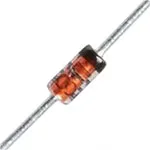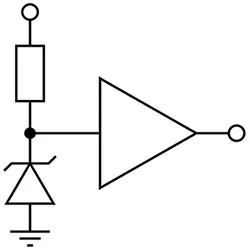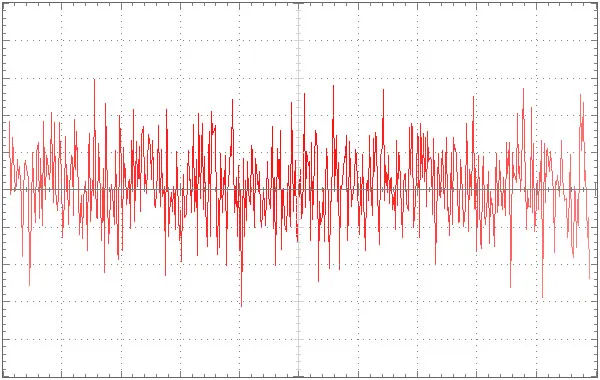Avalanche Noise as a Quantum Source of Entropy
Tech study | April 20, 2022
The Zener diode
The Zener diodes are well known and widely used in semiconductor technology. Their most common use is as a source of constant voltage, which retains its value regardless of the current flowing through the electronic circuit. These elements are characterized by the operating voltages to which they are intended to work. They are produced with values ranging from 1 V to 200 V and above. Diodes with voltages below 5.6 V work with a predominant Zener effect, named after its discoverer – the American physicist Clarence Zener, while those above 5.6 V utilize the so-called avalanche effect. Despite the different internal mechanisms of operation, both types of components are commonly referred to as Zener diodes.

The Zener diodes are always used with a reverse bias voltage applied to the p-n junction. A resistor limits the current in the circuit. A schematic is shown in the figure below.

When the reverse voltage reaches some specific value, the breakdown occurs. The current increases rapidly while the voltage, the so-called breakdown voltage, remains constant. The ordinary diodes would be irreversibly damaged when the reverse breakdown voltage is reached due to the increase in the current flowing and the heat released in the p-n junction zone. Contrary, the Zener diodes are manufactured to work safely in these conditions and will not be damaged. During manufacturing, the breakdown voltage value is controlled with high accuracy, which can be as much as 0.1%. Most of the Zener diodes, however, are manufactured with a tolerance of 5% or 10%.

Zener effect and avalanche effect
Although used for the same purpose, the Zener effect and the avalanche effect differ internally. The mechanism of generating current carriers in the transition zone is different. In the case of the Zener effect, because of the applied electric field, the p-n junction expands. This zone is also known as the depletion region because it has almost no current carriers there. Some valence electrons receive enough energy and jump over the potential barrier through the so-called quantum tunneling effect. Together with the positive charges (holes), they become free carriers. As a result, the current in the transition zone increases.
In the case of the avalanche effect, the mechanism is different. The reverse voltage applied to the p-n junction is stronger. As a result, the depletion region expands even more. The released electrons, because of the strong electric field, accelerate enough and collide with the atoms in the lattice, producing more free electrons. These new electrons also accelerate and generate more free carriers, as the process is avalanche-like. Hence the name avalanche effect. Again, the current through the diode increases while the breakdown voltage remains relatively constant.

An important difference between these two processes is that the Zener effect has a negative temperature coefficient while the avalanche effect has a positive one. Also, in the avalanche effect, some residual hysteresis is observed. In other words, even after the breakdown voltage is removed, the avalanche process continues. There is practically no hysteresis in the Zener effect.
Avalanche noise
There is another very important feature in the described mechanism of the avalanche effect. In the depletion region, when the current carriers strike the atoms of the crystal lattice or each other, significant random fluctuations are generated, forming the so-called avalanche noise. Noise amplitudes range from hundreds of µV to several mV, with the frequency range reaching tens of GHz. Its spectrum consists mainly of quantum shot noise, avalanche excess noise, and the inevitable noise caused by thermal fluctuations of particles. The avalanche noise is orders of magnitude greater than the noise generated in the Zener effect because of the natural internal amplification of the avalanche phenomenon. Therefore, the avalanche diodes can be used as a source of entropy (entropy is a physical quantity, a measure of the amount of chaos or disorder in a dynamical system) in the hardware random number generators.

Is the avalanche effect a quantum phenomenon?
The short answer is yes, absolutely! Each of the processes and phenomena presented so far is related to the behavior and interactions of elementary particles. And as we well know, the modern scientific paradigm postulates that everything in the world of elementary particles is dictated by the laws of quantum mechanics. Countless physical experiments and the progress in technology over the last hundred years have proved it unequivocally. The positions and velocities of individual particles are described not by deterministic quantities, as is in the case of classical physics, but by probabilistic (random or stochastic) variables, which are discrete and can change only by whole portions (quanta). Even more, Heisenberg’s uncertainty principle ensures that at some point in time, it is not possible to determine both the position and momentum (or velocity) of a particle with equal accuracy. All processes in the microscopic world of elementary particles are random and are described by the laws of quantum physics. This is how the Universe works!
In that sense, the mechanism of avalanche noise generation in the Zener diodes shown here is a quantum process. Its use as a physical source of entropy in the hardware random number generators ensures the security and uncompromising quality of the generated data.